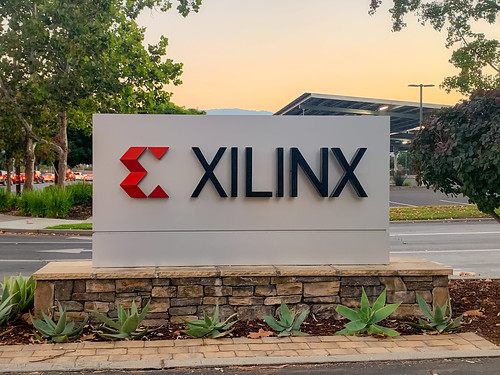Xilinx Inc – The Company Behind Programmable Semiconductor Chips.
Based in San Jose, California, Xilinx, Inc. is one of the leading programmable logic device manufacturers in America. The company is over 37 years old and has a glorious history of success. Xilinx is the inventor of the field-programmable gate array (FPGA) and is known for manufacturing the first fabless manufacturing model. The company is operating globally, and around 5000 people are working for the company. As of 2020, the annual revenue made by Xilinx is around US$ 3.16 billion.
The Founding Story of Xilinx Inc
Ross Freeman, Bernard Vonderschmitt, and James V Barnett II, work-fellows from Zilog (a microprocessor manufacturing company), founded Xilinx in 1984 in San Jose. The main idea behind starting the company was to develop reprogrammable chips that could be used like blank tapes. The founders could not convince Zilog to invest in FPGA, but they were able to raise $4.5 million in venture capital and design the company’s first FPGA in 1984, which they started to sell in 1985. The idea was successful. As a result, Xilinx made around $14 million in revenue in 1987.

The Growth and Expansion
The company profits were rising year by year, and in 1989, Xilinx went public on the NASDAQ. The success also led to a new 144,000-square-foot manufacturing unit in the same area, and Xilinx had bagged contracts from companies like HP, Apple Inc., IBM, and Sun Microsystems. In 1990, the company sales crossed $100 million, and Xilinx was dominating the FPGA market. During the same time, it also expanded its operations and started to experiment with EPLDs (EPROM technology-based Complex Programmable Logic Devices). By the mid-90s, the company was also operating in Europe and Asia.
In 1994, the company launched one of the most successful series of FPGA chips and, the XC5000. These chips were a cost-effective alternative to high-volume non-field-programmable gate array products. XC3100L and XC4000L were some of the most loved chips under the same chip family. Xilinx also started to manufacture low-power devices like portable computers, peripheral devices, wireless communication gear, and digital cameras, etc. Only after ten years of Xilinx’s inception, in 1995, its annual revenue reached $550 million, and around 1000 workers were employed at different office locations of Xilinx in three continents.
Xilinx appeared in the “100 Best Companies to Work For” in 2001 for the first time at no. 14, and later, it ranked 6the (2002) and 4the (2003) in the same list. The next innovative product from the company was in 2011, the Virtex-7 2000T. It is the first product that used the 2.5 stacked silicon to offer a bigger FPGA. At the same time, Xilinx combined the FPGA with transceivers to enhance the bandwidth with low power consumption. The company started from making programmable chips and was successful to achieve its aim of making “all things programmable”, when it introduced the 28nm SoC devices, combining an ARM core with an FPGA and new tools software under the Zynq-7000 family.
The next year, the company launched an advanced electronic design system named Vivado Design Suite, and in 2014, Xilinx released the first 20 nm UltraScale. In 2017, Xilinx partnered with Amazon and developed new software development tools. Xilinx is also actively working in the field of machine learning and has acquired a Chinese machine learning startup named DeepPhi Technology in July 2018. In November of the same year, the Zynq UltraScale+ family microprocessor got their Safety Integrity Level (SIL) certification, which certified that these microprocessors are safe to use in AI-based safety- applications of up to SIL 3, in industrial 4.0 platforms of automotive, aerospace, and AI systems. Xilinx acquired Solarflare Communications, Inc in 2019 and launched a single-chip FPGA-based 100G NIC jointly with the newly acquired company. The company made revenues worth $3 billion in 2019.
The CEO at Xilinx
Victor Peng is the current CEO of Xilinx Inc. He was born in Taipei, Taiwan in 1960 and holds American citizenship. Peng has got a B.E. degree in electrical engineering from Rensselaer Polytechnic Institute and an M.E. degree in the same subject from Cornell University.
Peng started his career at Digital Equipment Corporation (DEC) in 1982, and in 1996, he joined Silicon Graphics, switching to few more jobs in MIPS Technologies, Tzero Technologies, ATI, and later AMD in the following years. In 2008, Peng joined Xilinx and was appointed as the Senior Vice President of the programmable platforms group in 2013. He also served the company as the senior vice president (2014) and the CFO (2017). On January 29, 2018, Peng became the CEO of Xilinx.

Yashica is a Software Engineer turned Content Writer, who loves to write on social causes and expertise in writing technical stuff. She loves to watch movies and explore new places. She believes that you need to live once before you die. So experimenting with her life and career choices, she is trying to live her life to the fullest.